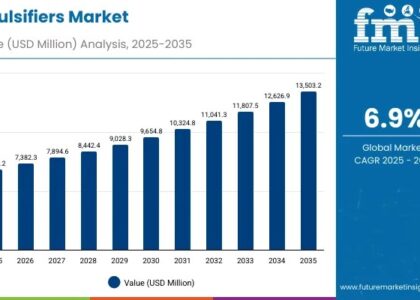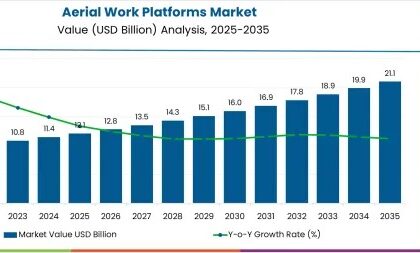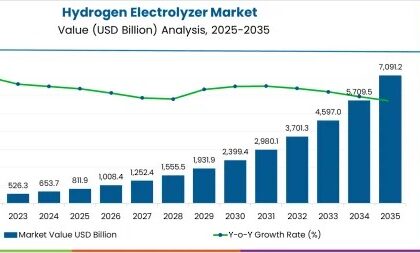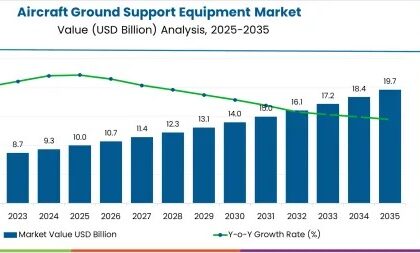𝐈𝐧𝐭𝐫𝐨𝐝𝐮𝐜𝐭𝐢𝐨𝐧: 𝐀𝐧 𝐔𝐧𝐭𝐚𝐩𝐩𝐞𝐝 𝐏𝐞𝐫𝐬𝐩𝐞𝐜𝐭𝐢𝐯𝐞 𝐨𝐧 𝐒𝐥𝐮𝐝𝐠𝐞 𝐂𝐡𝐞𝐦𝐢𝐜𝐚𝐥 𝐃𝐞𝐦𝐚𝐧𝐝
The global sludge treatment chemicals market has long been analyzed through the lens of large-scale municipal and industrial wastewater treatment operations. Most market evaluations focus on established factors such as rising population, urbanization, industrial waste generation, and the tightening of environmental regulations. However, a critical and often overlooked trend is reshaping this landscape—the rapid growth of decentralized sludge treatment systems in urban and semi-urban areas.
These small- to medium-scale, often modular systems are beginning to redefine chemical demand patterns, challenging traditional notions of supply chains, product types, and regional market dynamics. As developing economies and emerging smart cities move toward more sustainable and distributed water infrastructure, a new, highly localized chemical market is taking shape—one that is smaller in scale but far more agile and innovation-driven.
𝐌𝐚𝐤𝐞 𝐈𝐧𝐟𝐨𝐫𝐦𝐞𝐝 𝐃𝐞𝐜𝐢𝐬𝐢𝐨𝐧𝐬 – 𝐀𝐜𝐜𝐞𝐬𝐬 𝐘𝐨𝐮𝐫 𝐒𝐚𝐦𝐩𝐥𝐞 𝐑𝐞𝐩𝐨𝐫𝐭 𝐈𝐧𝐬𝐭𝐚𝐧𝐭𝐥𝐲! https://www.futuremarketinsights.com/reports/sample/rep-gb-1089
According to Future Market Insights, the sludge treatment chemicals market size is estimated at USD 15,817.4 million in 2025 and is expected to reach USD 24,800.0 million by 2035, reflecting a compound annual growth rate (CAGR) of 4.6%.
𝐃𝐞𝐜𝐞𝐧𝐭𝐫𝐚𝐥𝐢𝐳𝐚𝐭𝐢𝐨𝐧 𝐢𝐧 𝐒𝐥𝐮𝐝𝐠𝐞 𝐓𝐫𝐞𝐚𝐭𝐦𝐞𝐧𝐭: 𝐀 𝐆𝐚𝐦𝐞 𝐂𝐡𝐚𝐧𝐠𝐞𝐫
Unlike traditional centralized treatment plants that collect sewage from entire municipalities before processing, decentralized systems operate at a smaller scale, typically servicing a community, industrial estate, or a cluster of buildings. These systems are especially well-suited for geographies with fragmented infrastructure, where laying out an expansive sewage network is neither economical nor practical.
With decentralized operations, the chemical demands shift substantially. Rather than large-volume, bulk treatment chemicals, operators require customized, low-dosage, and highly efficient products that are compatible with compact treatment technologies. This has opened up a new arena for chemical manufacturers to innovate beyond generic sludge dewatering agents and coagulants, toward more sophisticated blends of eco-friendly flocculants, odor neutralizers, and microbial enzymes designed for flexible, small-scale usage.
These operational models not only support more sustainable wastewater practices but also influence the economic dynamics of the sludge treatment chemicals industry. Smaller treatment footprints require minimal chemical storage, shorter dosing cycles, and quicker reactivity—all factors that are catalyzing a shift toward high-performance, precision-formulated treatment agents.
𝐂𝐚𝐬𝐞 𝐒𝐭𝐮𝐝𝐲: 𝐌𝐨𝐝𝐮𝐥𝐚𝐫 𝐒𝐥𝐮𝐝𝐠𝐞 𝐔𝐧𝐢𝐭𝐬 𝐢𝐧 𝐔𝐫𝐛𝐚𝐧𝐢𝐳𝐢𝐧𝐠 𝐀𝐬𝐢𝐚
A case in point is the growing urban sprawl in Indonesia and the Philippines, where decentralized wastewater systems are becoming essential due to infrastructural limitations. In mid-sized cities like Surabaya and Cebu, the deployment of containerized modular sludge treatment units in residential zones has accelerated. These mobile systems, often managed through public-private partnerships, are designed to treat sewage and sludge locally, without routing it to centralized plants.
This operational shift has led to a surge in demand for specific chemical categories. For instance, polymeric flocculants with quick-settling properties are now preferred to reduce retention time. Similarly, odor-control agents based on plant-derived aldehydes are increasingly used to manage emissions, especially in residential vicinities where proximity to homes is a concern. One manufacturer in the region reported a 35% increase in sales of low-toxicity coagulants, directly linked to the rise of these modular installations.
𝐆𝐞𝐭 𝐚𝐧 𝐨𝐯𝐞𝐫𝐯𝐢𝐞𝐰 𝐨𝐟 𝐝𝐫𝐢𝐯𝐞𝐫𝐬 𝐚𝐧𝐝 𝐜𝐡𝐚𝐥𝐥𝐞𝐧𝐠𝐞𝐬 𝐚𝐟𝐟𝐞𝐜𝐭𝐢𝐧𝐠 𝐭𝐡𝐢𝐬 𝐢𝐧𝐝𝐮𝐬𝐭𝐫𝐲! https://www.futuremarketinsights.com/reports/sludge-treatment-chemicals-market
The knock-on effect is clear: decentralized systems create micro-markets for chemical consumption that, when aggregated, represent a significant portion of regional demand. These installations, though small in capacity, operate in high numbers and exhibit steady chemical usage, offering long-term revenue stability to suppliers who can adapt quickly.

𝐏𝐫𝐨𝐝𝐮𝐜𝐭 𝐚𝐧𝐝 𝐏𝐫𝐨𝐜𝐞𝐬𝐬 𝐈𝐧𝐧𝐨𝐯𝐚𝐭𝐢𝐨𝐧 𝐃𝐫𝐢𝐯𝐞𝐧 𝐛𝐲 𝐃𝐢𝐬𝐭𝐫𝐢𝐛𝐮𝐭𝐞𝐝 𝐒𝐲𝐬𝐭𝐞𝐦𝐬
Chemical manufacturers are beginning to respond to this evolving market by rethinking not just product formulations but also the delivery and application methods. Companies are now offering pre-measured, cartridge-based chemical systems tailored for decentralized units, eliminating the need for on-site dosing expertise. These innovations are particularly valuable in rural or semi-urban regions where technical staff may be scarce.
In parallel, there’s a noticeable trend toward biodegradable and low-residue chemicals that are optimized for membrane bioreactors (MBRs) and other compact treatment modules. These newer products not only meet the performance requirements of smaller systems but also align with eco-friendly sludge treatment solutions, which are gaining regulatory favor.
Furthermore, the push for chemical process automation in decentralized plants has spurred the development of smart chemical monitoring and dosing solutions. Through sensor integration and data-driven feedback loops, treatment chemicals are now being dispensed with precision, reducing wastage and ensuring consistent sludge conditioning performance.
𝐑𝐞𝐠𝐢𝐨𝐧𝐚𝐥 𝐌𝐚𝐫𝐤𝐞𝐭 𝐑𝐞𝐛𝐚𝐥𝐚𝐧𝐜𝐢𝐧𝐠: 𝐀 𝐍𝐞𝐰 𝐂𝐨𝐧𝐬𝐮𝐦𝐩𝐭𝐢𝐨𝐧 𝐆𝐞𝐨𝐠𝐫𝐚𝐩𝐡𝐲
The rise of decentralized treatment systems is shifting the geographical distribution of sludge chemical consumption. Previously, major consumption hubs were located in large metropolitan regions with centralized infrastructure. Today, tier-2 and tier-3 cities in South Asia, Sub-Saharan Africa, and Latin America are emerging as fast-growing markets due to infrastructure decentralization.
For example, in Kenya, a government-backed initiative to deploy decentralized sanitation units in peri-urban Nairobi has driven up the demand for dry sludge conditioners and composting accelerants, products that were previously niche. This shift is compelling global suppliers to diversify their logistics and distribution models, establishing smaller regional depots and forming local partnerships to serve distributed demand nodes efficiently.
Such regional market rebalancing underscores the importance of demand trends in industrial sludge management that are not captured by centralized production metrics. As decentralized projects scale up, they are not only creating consistent demand but also prompting manufacturers to redesign supply chain logistics to accommodate smaller, more frequent chemical deliveries across wider geographies.
𝐈𝐧𝐝𝐮𝐬𝐭𝐫𝐢𝐚𝐥 𝐚𝐧𝐝 𝐈𝐧𝐬𝐭𝐢𝐭𝐮𝐭𝐢𝐨𝐧𝐚𝐥 𝐂𝐡𝐞𝐦𝐢𝐜𝐚𝐥𝐬 𝐈𝐧𝐝𝐮𝐬𝐭𝐫𝐲 𝐀𝐧𝐚𝐥𝐲𝐬𝐢𝐬: https://www.futuremarketinsights.com/industry-analysis/industrial-and-institutional-chemicals
𝐒𝐭𝐫𝐚𝐭𝐞𝐠𝐢𝐜 𝐈𝐦𝐩𝐥𝐢𝐜𝐚𝐭𝐢𝐨𝐧𝐬 𝐟𝐨𝐫 𝐌𝐚𝐫𝐤𝐞𝐭 𝐒𝐭𝐚𝐤𝐞𝐡𝐨𝐥𝐝𝐞𝐫𝐬
The future of the sludge treatment chemicals market will be shaped not only by megacities and industrial complexes but also by how effectively companies respond to the rising tide of decentralized sludge treatment infrastructure. These systems offer a unique opportunity to deliver targeted, sustainable, and cost-effective chemical solutions at scale—if suppliers are agile and innovative enough to meet their distinct demands.
Investors, policymakers, and chemical producers must realign their strategies to account for this emerging consumption dynamic. What was once a niche segment is now a rapidly expanding avenue with transformative potential for sludge disposal cost optimization chemicals and environmentally conscious formulations. As decentralized models gain traction globally, understanding their influence is not optional—it is essential for securing competitive advantage and ensuring relevance in a transforming market landscape.






